Introduction
Bamboo is considered one of the oldest materials used in construction, it has been widely used throughout history by many civilizations. Naturally growing in tropical regions such as South America, Asia and Africa. In this proposal, we explore the potential of utilizing bamboo in a modular manner to create a social housing in the city of Cusco, Peru.
Abstract
Cusco Social Housing proposal explores how locally sourced bamboo can be used to create a modular structural grid to be used as foundation for prefabricated “living cells” which can accommodate different types of residential units. The proposal highlights the flexibility, low environmental impact and speed of creating relatively complex communities in a short period of time and with much lower cost compared to traditional building techniques.

Structural methodology
Through computation design, we explored the conceptual approach to the structural system of one “Living Cell” and applied a simple column and beam system to allow for easy assembly/disassembly while minimizing the need for redundant structural elements. For the simulation purposes, we simplified our bamboo bundle which is used for both columns and beams into a rectangular cross-section that varies in size depending on the typology and loads’ direction.
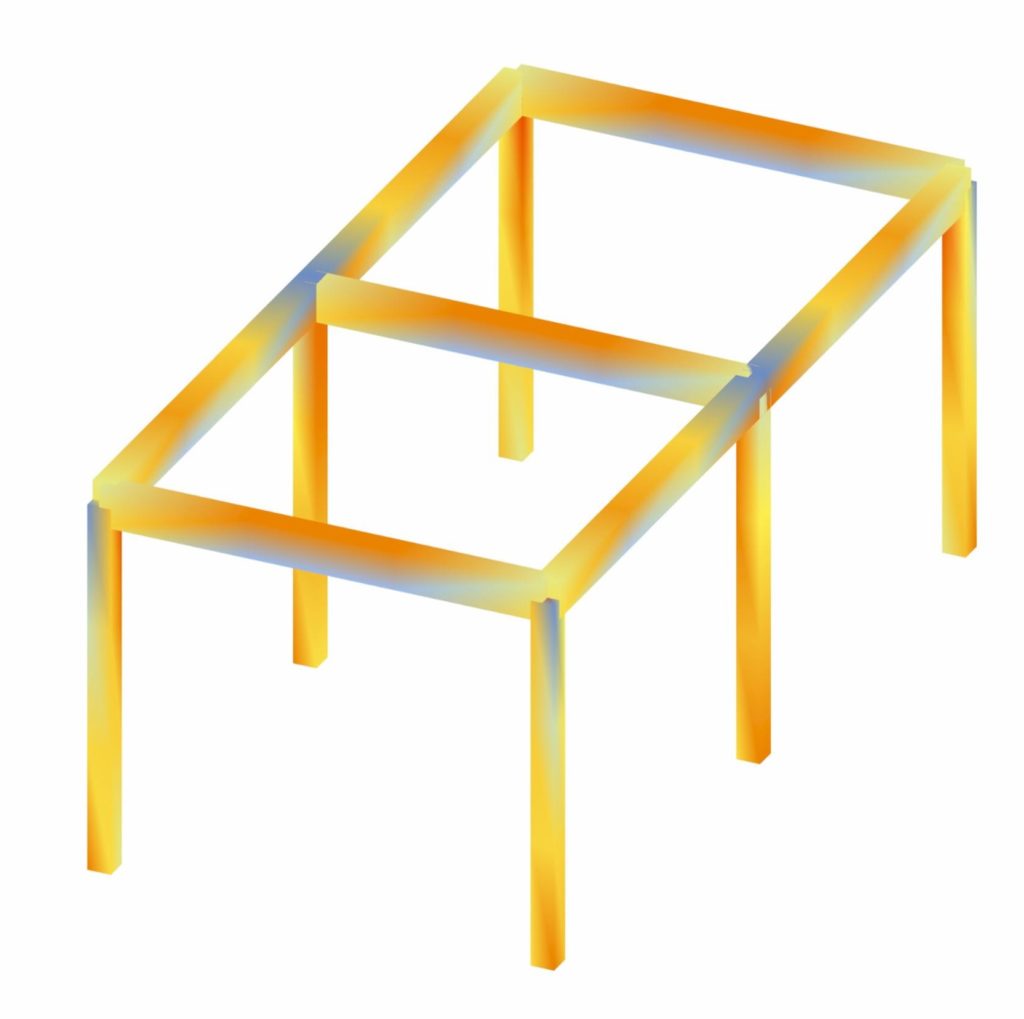
We then start analyzing the stress/strength and the deformation of multiple modules for the different structural elements; Columns, Beams and slabs using only vertical loads (Live and dead loads) and gravity.

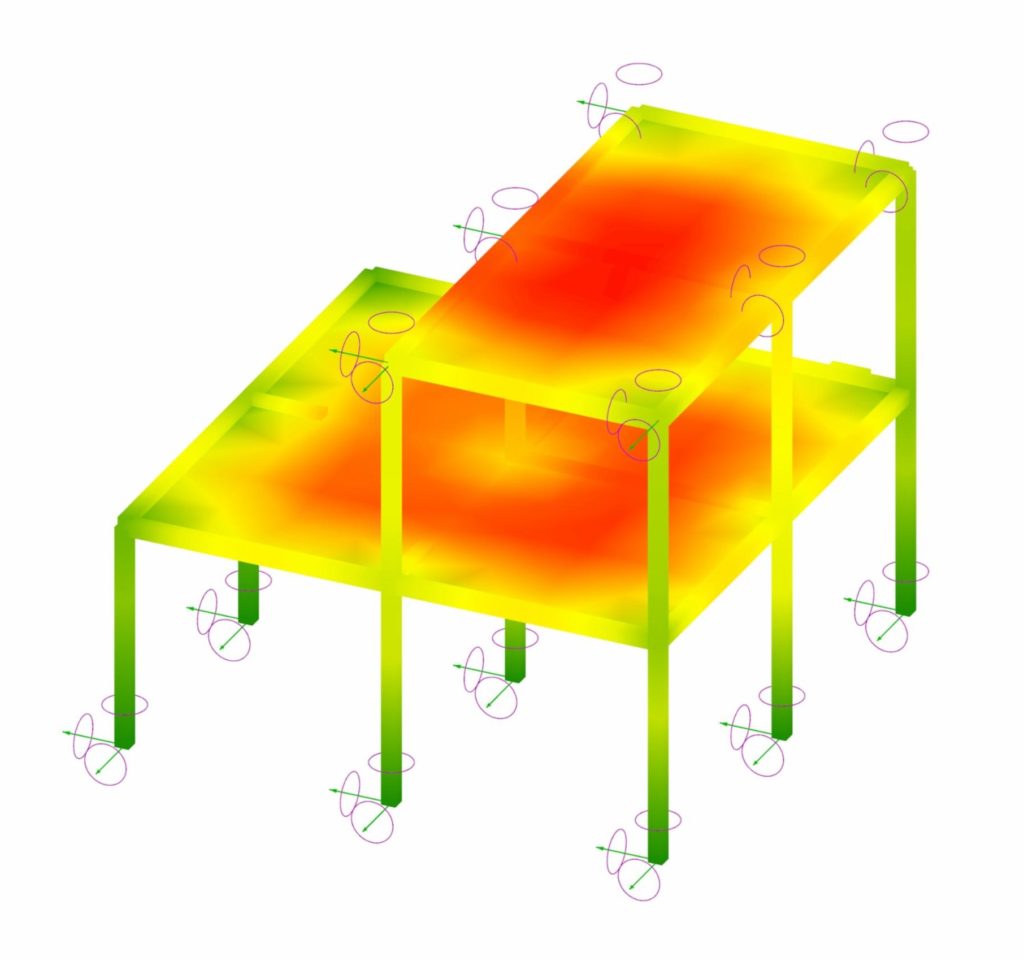


Once we determine how the main structural system behaves under different loads, we start exploring the full assembly as a whole and we introduce lateral loads such as wind load. The following illustration highlights how wind can significantly affect the overall structural stability. Accordingly, we introduce diagonal bracing to stabilize the structure and achieve rigidness.

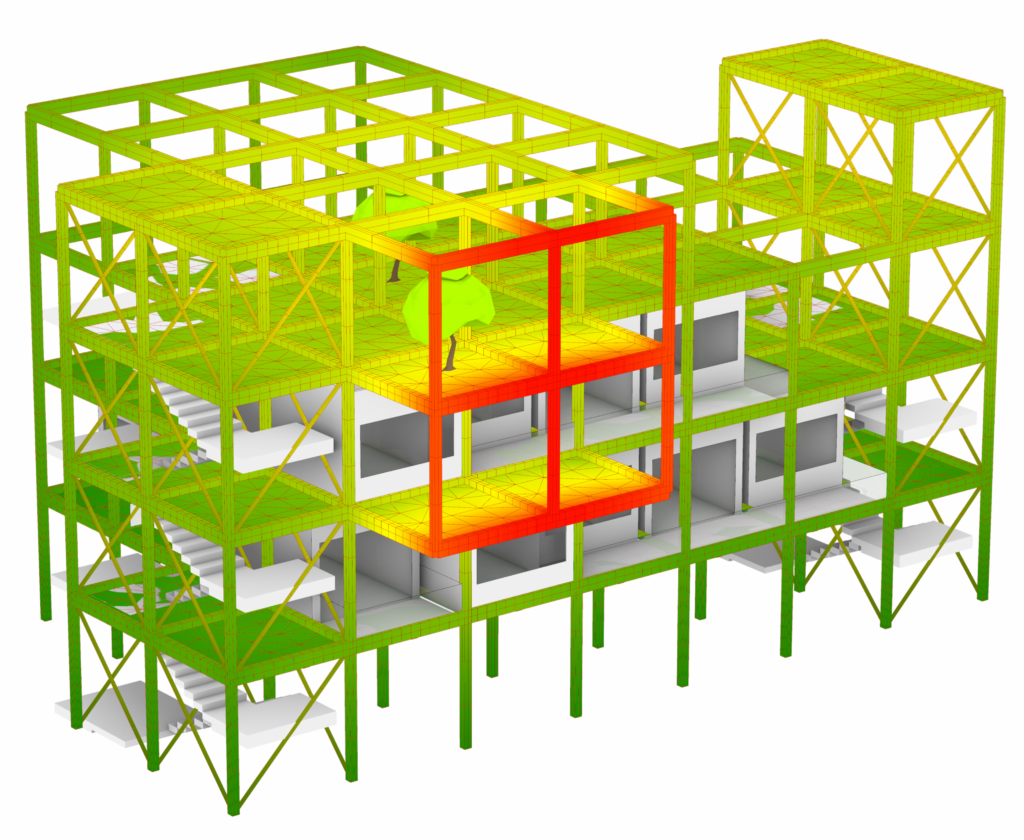
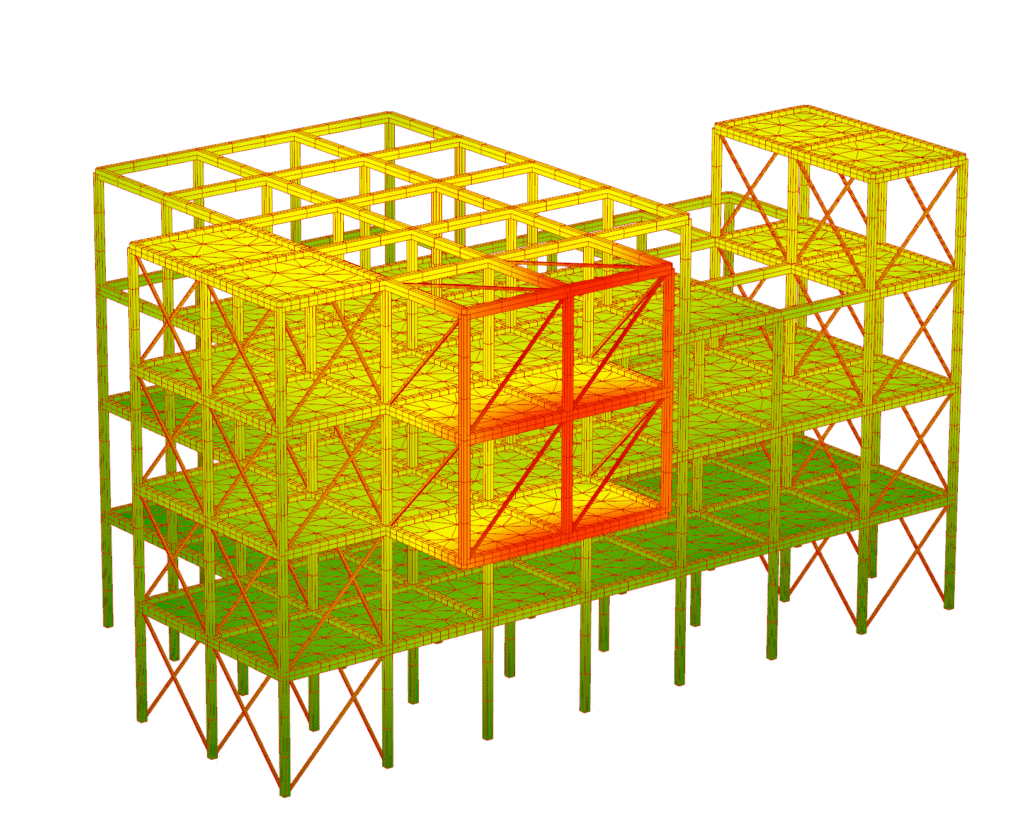


Optimization Procedures
After defining the full structural system, with the help of computational analysis tools, we start optimizing our overall structure by using an algorithm that optimizes the position and quantity of bracing required to ensure stability while minimizing material usage.


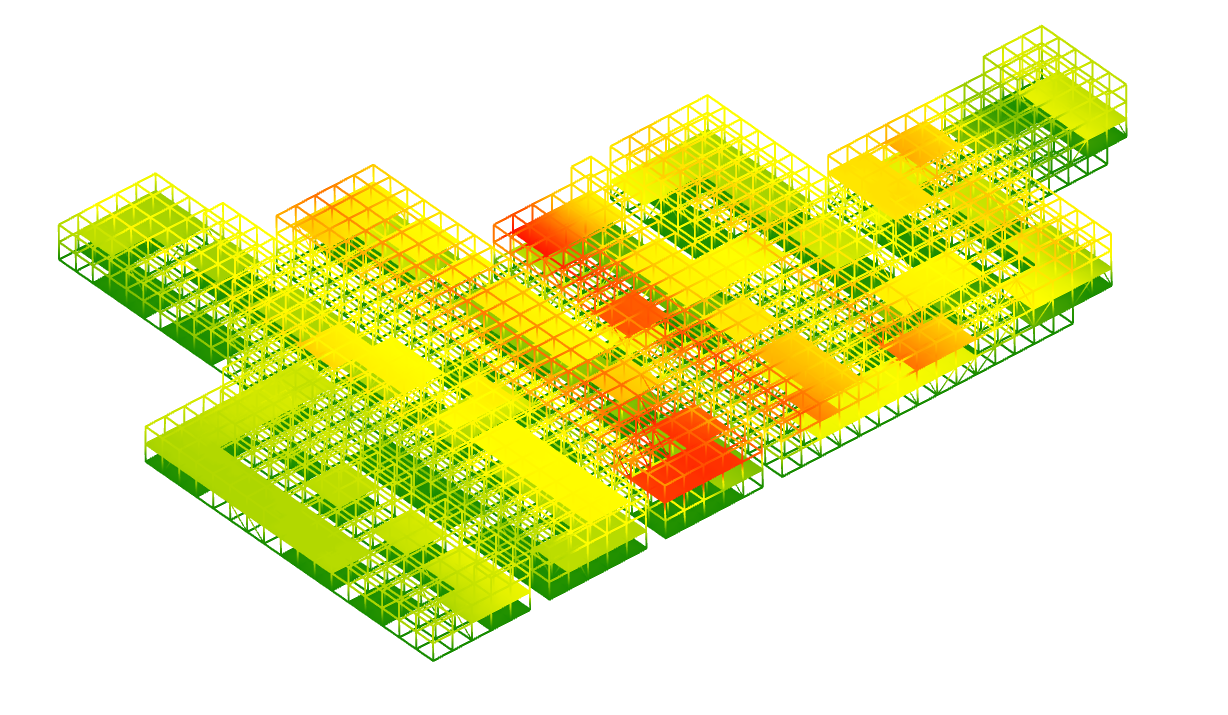

Conclusion
Our proposal explores how. with the help of computational design and advanced analysis software such as Karamba 3D, we can use simple, abundantly available, and low-cost material such as bamboo to construct an efficient and optimized housing solutions that can address both cost of housing as well as availability in ruler areas and lower income communities.

